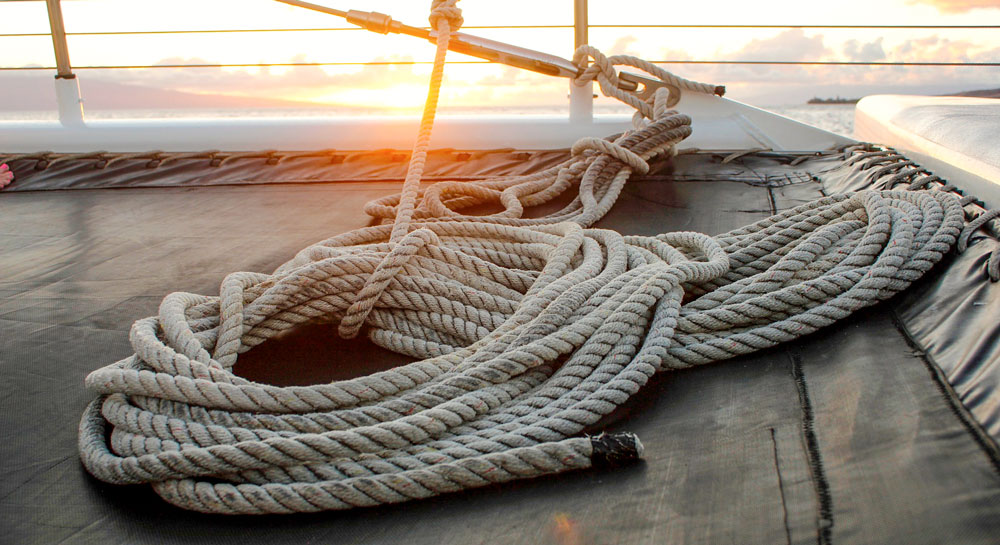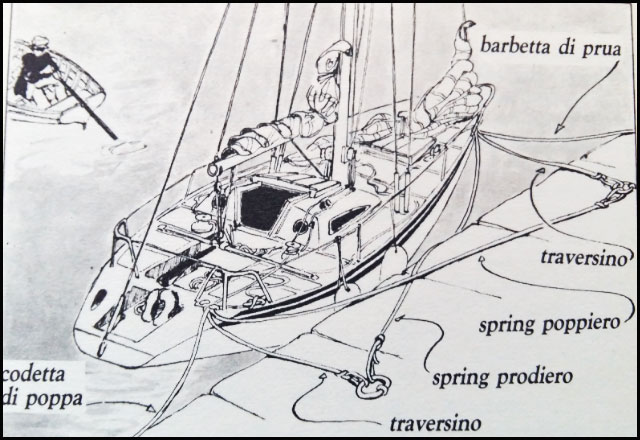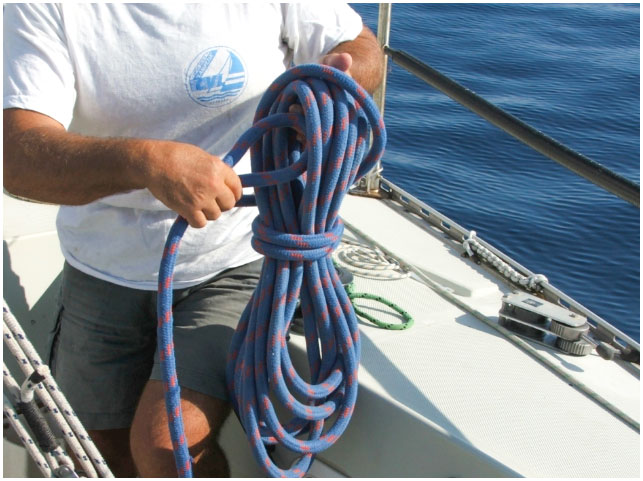On a boat, we don’t use ropes. If a skipper gives instructions to their crew using this term, something’s not right. Boating has its own vocabulary, and those who live it must be aware that each word has its specific meaning. Ropes don’t exist, you can’t confuse the halyard with the sheet, tightening and hauling aren’t perfect synonyms. And don’t be mischievous. Let’s take a quick review of all the vocabulary related to textile lines on boats and the actions that can be performed with them.

The basic lexicon requires knowledge of the term line to indicate the cable used for mooring, as well as the hawser, which differs only in size. A particular line is the
Is the difference clear? Let’s now look at the verbs that indicate their use. A skipper who
Getting fouled, less commonly used with the transitive to foul, indicates when a line becomes tangled with itself, with other lines, or with any object. Making fast indicates securing a line firmly to a support, more generally called hitching. Taking a turn means making a complete turn of the line around the support. To connect two lines (to create a longer one) the correct term isn’t tying, but splicing. Finally, let’s remember not only the term but also the good practice of coiling, which means gathering a line in a snake-like pattern, to avoid throwing it in disorder on the deck. More generally, it can also mean storing a line on a surface by organizing it in concentric strips so it doesn’t tangle. Speaking of ropes, for a skipper, denotes a worrying difficulty in managing nautical terminology.



